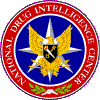
|
National
Drug Intelligence Center
New York/New Jersey High Intensity Drug
Trafficking Area Drug Market Analysis
June 2007
Strategic Drug
Threat Developments
- Mexican drug trafficking organizations (DTOs) are transporting
a larger percentage of the cocaine and heroin available in the NY/NJ
HIDTA region and are taking a more significant role in distributing
drugs in the area. Colombian DTOs have lessened their direct involvement
in transportation and distribution duties, creating this opportunity
for Mexican DTOs to increase their market share. Over the past 12
to 16 months, Mexican DTOs' growing role has led to an influx of
higher-purity crystal methamphetamine,1
a larger volume of drugs transported overland (mostly from the Southwest
Border area), and a significant decline in drugs transported to
the HIDTA region from Florida.
- Canada-based DTOs have increased the size of the hydroponic
marijuana loads that they ship into the HIDTA region through western
New York ports of entry (POEs). Previously, the loads weighed several
hundred pounds and were commonly transported in private vehicles;
now, most weigh multithousand pounds and are transported in commercial
vehicles. This may indicate that DTOs in eastern Canada are expanding
to more markets in the United States.
- Syracuse and Albany, New York, have become major transshipment
points for Canadian hydroponic marijuana smuggled through the St.
Regis Mohawk (Akwesasne) Reservation. Dominican traffickers drive
from New York City to meet with Native American smugglers from the
reservation to purchase marijuana at these locations.
- Street gang involvement in retail-level distribution of cocaine
and heroin is rising, particularly in the
Upstate2
New York HIDTA counties. This activity has led to increased violence
in the region over the past several years.
- The purity of South American (SA) heroin, the predominant type
available in the HIDTA region, has decreased slightly. Newark, which
previously led the nation in SA heroin purity, now ranks behind
Philadelphia, Pennsylvania, and New York City. SA heroin purity
has been decreasing in the HIDTA since 2003; however, this is the
first time Newark did not lead the nation in SA heroin purity.
- Despite reported decreases in SA heroin purity, heroin poses
an increasing threat to the HIDTA region. Abuse, particularly among
young people, is increasing. Additionally, abuse is spreading from
lower-income neighborhoods to middle- and upper-income neighborhoods.
The reason for this increase in heroin abuse is largely unknown
by law enforcement and public health officials at this time; however,
some believe it may be linked to the fact that heroin is now commonly
snorted, and the stigma of injecting the drug is less frequently
associated with its abuse.
|
Drug Trafficking Organizations,
Criminal Groups, and Gangs
Drug trafficking organizations are complex
organizations with highly defined command-and-control
structures that produce, transport, and/or distribute
large quantities of one or more illicit drugs.
Criminal groups operating in the United States
are numerous and range from small to moderately sized,
loosely knit groups that distribute one or more drugs
at the retail and midlevels.
Gangs are defined by the National Alliance
of Gang Investigators' Associations as groups or associations
of three or more persons with a common identifying sign,
symbol, or name, the members of which individually or
collectively engage in criminal activity that creates
an atmosphere of fear and intimidation.
|
To Top
To Contents
The NY/NJ HIDTA region encompasses 17 counties located throughout
New York and in northeastern New Jersey. The New York portion consists
of the five boroughs of New York City (Brooklyn, the Bronx, Manhattan,
Queens, and Staten Island), the outer two counties of Long Island (Nassau
and Suffolk), Westchester County (just north of New York City), and
four counties in Upstate New York that were recently added to the HIDTA
region (Albany, Erie, Monroe, and Onondaga3).
The New Jersey portion consists of Bergen, Essex, Hudson, Passaic, and
Union Counties. Approximately 21 million individuals--more than 7 percent
of all U.S. residents--reside in the HIDTA region.
The HIDTA region includes the most ethnically diverse urban area
in the nation, allowing foreign-born criminals to easily blend in and
operate throughout the area.4
Individuals from over 100 countries reside in the New York metropolitan
area, and almost 2 million of the approximately 8 million New York City
residents are foreign-born. Significant numbers of people from drug
source and transit countries reside in various parts of the HIDTA region.
For example, the Jackson Heights section of Queens contains the largest
Colombian community outside Colombia, and the Washington Heights section
of Upper Manhattan is home to a large concentration of Dominican-born
residents.
End Notes
1. Law enforcement
and treatment authorities in the High Intensity Drug Trafficking Area
(HIDTA) region use the term "crystal methamphetamine" to refer both
to powder methamphetamine that has been recrystallized and high-purity
ice methamphetamine. Recrystallized powder is the form most commonly
found in the HIDTA.
2. For the purposes
of this report, "Upstate New York" refers to the area of New York State
outside the area of New York City, Long Island, and Westchester County.
Areas referred to as being located in western New York (Buffalo, etc.)
are included in Upstate New York.
3. NY/NJ HIDTA
recently expanded to include Albany, Erie, Monroe, and Onondaga Counties
in Upstate New York. These counties have been added to the HIDTA region
because of their emerging role as key distribution centers for illicit
drugs originating in New York City and because of the increasing presence
of New York City-based drug trafficking organizations (DTOs) in the
counties.
4. to
the U.S. Census Bureau, the population of the New York metropolitan
area is 45 percent Caucasian, 27 percent African American, 27 percent
Hispanic, 10 percent Asian and Pacific Islander, and less than 1 percent
Native American, Eskimo, or Aleut.
To Top
To Contents
To Next Page
To Publications Page
To Home Page
|
